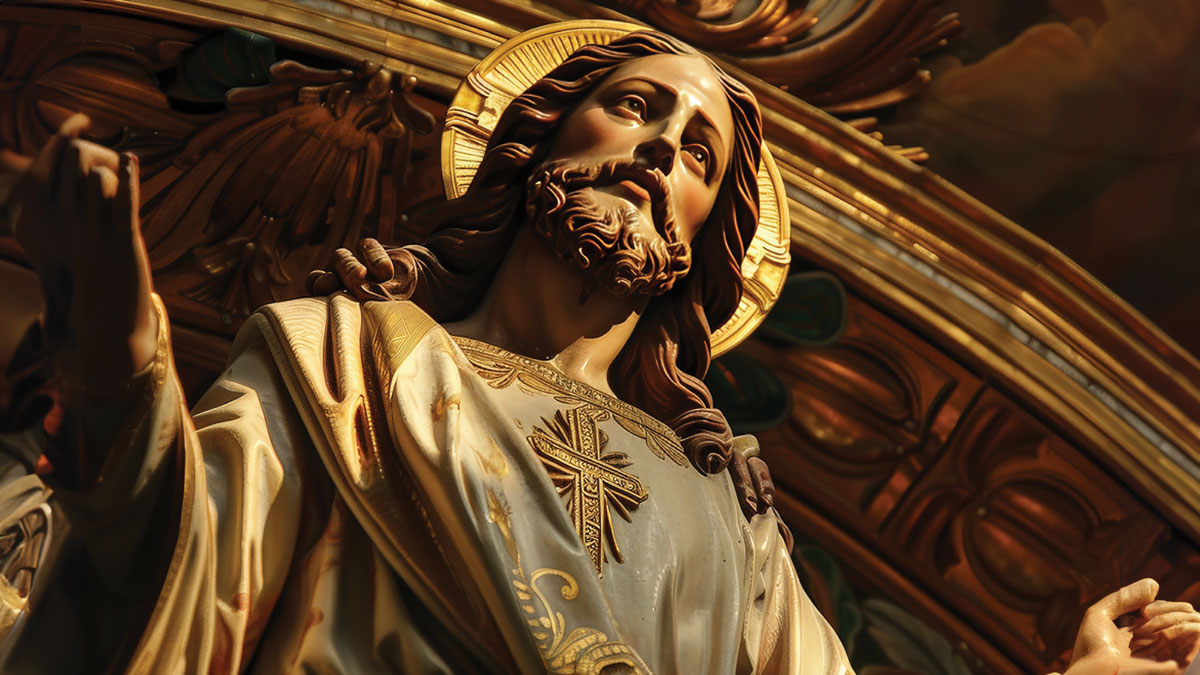As a young pastoral couple, my wife and I had just arrived at our new parish. Having researched the area, I was excited about growing the Adventist membership in that location. Something I’d not anticipated, however, were the serious theological challenges that were awaiting me in my new church, which was embroiled in debate regarding the nature of the Godhead, particularly the nature of Christ and the personhood of the Holy Spirit.
As so often happens, the church was divided into two camps: the majority supported official Adventist teachings, while the minority, consisting of sincere church members, believed that the Adventist Church had erred in embracing the doctrine of the Trinity. This group agitated for a return to the teachings of early Adventist pioneers, many of whom were not comfortable with the doctrine of the Trinity. Within a few days of our arrival in town, an envelope containing tracts compiled by the latter group arrived in my letterbox. With my head still spinning from our recent move, I nevertheless reviewed these tracts, the main thrust of which was that Christ owed His existence and thus was subordinate to the Father throughout eternity past, present and future; that the early Church’s adoption of the trinitarian doctrine was a departure from the teaching of the Scriptures; that by adopting trinitarianism, the Adventist Church was vulnerable to other ”heretical” doctrines, such as Sunday worship and ecumenism; and that the only hope for Adventism was a return to the anti-trinitarianism of early Adventist pioneers.
As I mulled over these tracts, it struck me that the authors of these tracts did not advocate a return to the very earliest Adventist thinking, when many considered Christ “the first created being”.1 Rather, the tracts advocated a more refined position, ie, that, rather than being created, Christ was generated (or begotten) by God the Father so far back in eternity that, for all practical purposes, He could be considered eternal, but that this did not entail Christ’s equality with God.2 This position, advocated by modern Adventist anti-trinitarians, overlaps in its understanding of the origin and function of Christ with the teachings of the Alexandrian school of theology, which flourished during the second and third centuries AD.3
The theological school of Alexandria, Egypt, was founded in the mid-2nd century AD with the purpose of instructing baptismal candidates in the Christian faith. Very quickly, it became a major theological think-tank of the ancient Christian church and played an important role in the development of early Christian theology. However, the Alexandrian theologians were strongly influenced by Greek philosophy, which they saw as a natural ally for explaining Christian teachings to those with a pagan worldview. As a result, they departed from biblical teaching in some of their theology and these unbiblical teachings continue to impact some Christian doctrines, including the doctrine of the Trinity.
Drawing on Greek philosophy, the Alexandrian theologians taught that there was one God, the Father of Jesus Christ, who alone was the uncreated Creator, the fountainhead of all existence. Because God was transcendent, He could only be known to humans through a mediator, the Logos. While the Alexandrians spoke of the Logos as “God in the form of man”, they hesitated to ascribe to the Logos the supreme, underived divinity that would make Him equal with God. Instead, they considered Christ to be eternally subordinate to God the Father. They considered this position more compatible with both the monotheism of the Old Testament and Greek philosophy, thus making Christianity more acceptable to a pagan audience.
Furthermore, to explain the origin of the Logos, the Alexandrian theologians also drew on Greek philosophy, which taught that subordinate beings “emanate” or “generate” out of the “Absolute One” rather than being created. While oversimplified, this concept of “eternal generation” can be understood by comparing it to the process of yeast reproduction. Yeasts are unicellular organisms, which reproduce asexually through a process known as budding that results in a clone equal to and separate from the original. However, the primary cell always remains primary, and the secondary cell always remains secondary, with the process of generation continuing throughout eternity. By explaining the relationship between the Father and the Son in terms of eternal generation, the Alexandrians were able to speak of Christ as sharing co-eternal existence with the Father and participating in His nature, without making Christ equal to God. As a result, while the Alexandrians underlined the full divinity of Christ, their theology inevitably led toward subordinationism, ie, the fountainhead of all existence was God the Father, whereas Christ, while considered one with the Father, was subordinate to Him.
The Alexandrian theologians’ understanding of Christ as subordinate to God the Father inevitably impacted their understanding of salvation. As with all their theology, the way they understood God’s saving activity was deeply influenced by Greek philosophy. Following the first stage of His existence, when the Logos was “with God”, Christ was incarnated in the human form of Jesus, thus becoming a mediator between God and humanity. While on earth, Christ was both God and man, and the main purpose of His incarnation was to show humanity the path to becoming more like God. Human beings, the Alexandrians believed, were born minimally impacted by the Fall and with their free will intact. Thus, by following the example of the incarnated Christ, humans could, if they chose to, embark on the journey toward becoming divine. What began with Christ, i.e., “the union of the divine with the human nature”, they argued, could also be a reality for humans, who “by communion with the divine, might rise to be divine” by “enter[ing] upon the life which Jesus taught”. The outcome of this process was being “changed into God”, otherwise referred to in early Christian literature as “deification”, or theosis. In Alexandrian thinking, therefore, salvation depended on human performance. Because their free will was unaffected by the Fall of Adam, humans had the ability to choose between good and evil. Subsequently, believers could follow Christ’s example until they were perfect. Once again, this understanding of salvation unmistakably resembled Greek philosophy.
So, what did the Alexandrian theologians make of the New Testament teaching that salvation was through the blood of Christ? While they emphasised the sacrificial character of Christ’s death, they did not teach that Christ died in place of sinners. Rather, the primary value of His death lay in the fact that he provided an example of “death endured for the sake of piety” and “for the good of the human race”. Secondarily, His death served as “the first blow in the conflict which is to overthrow the power of that evil spirit the devil”, who stood in the way of humans’ journey toward perfection. Thus, by utilising Greek philosophy as a tool for explaining Christian theology, the Alexandrians significantly diminished the value of Christ’s sacrifice on the cross.
Why Is This Important?
The impact of Alexandrian theology on ancient Christianity was resounding. At one level, the Alexandrians spoke very highly of the Logos and their work stimulated discussion on the nature of Christ and the Holy Spirit. At the same time, however, the Alexandrians’ desire to harmonise Greek philosophy with New Testament Christianity resulted in a creeping syncretism that impacted the core of the Christian faith, i.e., the understanding of God, Christ and the Holy Spirit, as well as salvation, for generations to come.
Considering this history, it is important for Adventist Christians to consider an important question: Was it coincidental that the Alexandrians embraced a subordinationist view of Christ and rejected His substitutionary atonement? Or was their rejection of Christ’s co-equal and co-eternal divinity and emphasis on His human nature the primary reason why they minimised Christ’s death and emphasised emulating His example as a way of achieving perfection?
In the centuries that followed, the ancient Christian Church revealed its discomfort with Alexandrian theology in two ways. First, in the early creeds, the Church attempted to settle the question of the divinity of Christ. However, unable to free themselves of the influence of Greek philosophy, they still spoke of Christ in terms of “eternal generation”. Second, the Church combined grace and obedience as the means of salvation. Furthermore, rather than returning to the New Testament idea that Christ’s death was a complete atonement for human sin, the Church turned towards its rituals as the means of God’s grace and embraced the notion that there was no salvation outside the church (Latin: extra ecclesiam nulla salus). However, the desire for theosis, or sinless perfection as a way of salvation, was never entirely extinguished and manifested itself in the monastic movement, in the various self-mortification rituals of medieval Catholicism, and, most importantly, in the cult of the saints.
The 16th-century Reformation dealt a serious blow to the concept of salvation through theosis, or perfect sanctification, and the focus moved from human achievement to Christ’s death on the cross. While the early Reformers’ theology was not a complete return to the teachings of Scripture, their focus on the co-equal and co-eternal divinity of Christ and salvation by grace and faith alone (sola gratia et fides) constituted a valiant effort to ground Christianity in the teachings of the New Testament.
In modern Adventism, we are currently witnessing a resurgence of a version of Alexandrian thinking relating to Christ’s divinity and the doctrine of salvation. While very few contemporary Adventist anti-trinitarians agree with Uriah Smith and those early Adventist pioneers who claimed that Christ was created, neither are they willing to accept the trinitarian theology of Christ’s co-equal and co-eternal divinity. Thus, the only option left is the Alexandrian concept of “generation”, which, they believe, occurred so far in the past that, for all practical purposes, Christ could be considered co-eternal.
Does their understanding of Christ as eternally subordinate have any effect on their understanding of salvation? I believe it does.
A careful study of anti-trinitarian Adventist literature, all of it self-published, reveals an unmistakable trend; namely, the centrepiece of their understanding of salvation is usually the life of Christ as an example for believers. While acknowledging Christ’s death as important, contemporary Adventist anti-trinitarians tend to focus on Christ’s perfect obedience and subordination as an example for believers to emulate, often leading to an emphasis on the need for sinless perfection.4 As shown above, however, such an understanding of salvation is, of course, a version of early Christian theosis, which has roots in Alexandrian theology, and, ultimately, in Greek philosophy.
The Adventist doctrine of salvation values the example of Christ’s life and sanctification. However, sanctification has its proper place in relation to justification, which comes first, and which was accomplished through Christ’s substitutionary death. When believers accept Christ’s accomplishments on the cross, God, through His Holy Spirit (the third Member of the Godhead), works in their lives “to will and to act according to his good purpose” (Philippians 2:13; Hebrews 13:20,21). Ellen White expressed this with striking clarity: “We do not earn salvation by our obedience; for salvation is the free gift of God, to be received by faith. But obedience is the fruit of faith” (Steps to Christ, 61).
Making Christ less than God the Father and sanctification the means of salvation unmistakably points to the influence of Greek philosophy.
- Uriah Smith, Thoughts, Critical and Practical on the Book of Revelation (1865), 59.
- Similar positions were taken by some Adventist thinkers around the time of the Minneapolis General Conference (1888), such as EJ Waggoner.
- For a fuller, scholarly treatment of the Alexandrian school of theology and sources of quotations in this article, see Darius Jankiewicz, “Lessons from Alexandria: The Trinity, The Soteriological Problem and the Rise of Modern Adventist Anti-Trinitarianism.” Andrews University Seminary Studies 50:1 (Spring 2012): 5-24.
- It is important to note that this is a generalisation, as there exists a variety of anti-trinitarian expressions of faith within Adventism. Furthermore, not all who advocate for sinless perfection are anti-trinitarians; the reverse, however, is mostly true.
Dr Darius Jankiewicz is the ministerial and field secretary, South Pacific Division.






